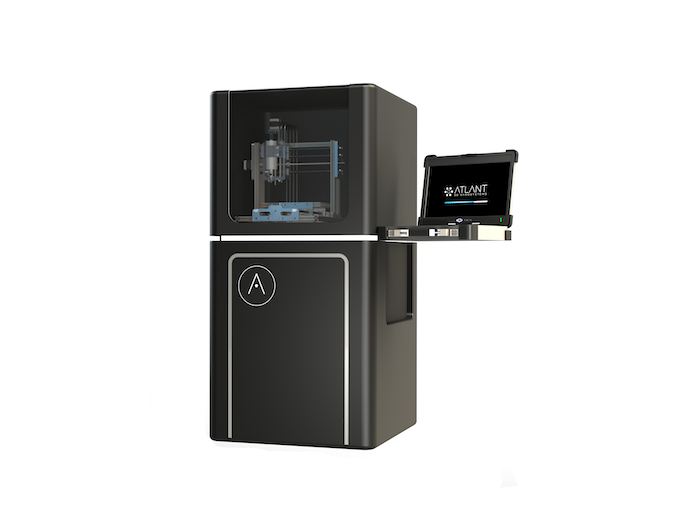Innovative atomic layer 3D printer could make production of nanodevices easier
Three-dimensional printing has huge potential for producing micro and nanosystems. Miniature lab-on-chip, microelectromechanical systems (MEMS), and sensors can all be made more cheaply and quickly than conventional methods like photolithography and thin-film based fabrication. But until now, additive manufacturing solutions have had a limited printing resolution, which was restricted to a few materials and lacked flexibility. The EU-funded ATLANT3D(opens in new window) project piloted a prototype to overcome those obstacles. The Danish company ATLANT 3D Nanosystems developed the know-how technology for a machine it had developed called a nanofabricator. As a result, the company’s four-strong full-time team is now able to target the fast-growing market of MEMS and sensors, projected to reach up to EUR 55.7 billion by 2026, forecasts market researcher ReportLinker(opens in new window). “Our technology enables groundbreaking, one-step printing of atomic layer precision. This reduces prototyping, development and maintenance costs, and the use of hazardous materials. More importantly, enabling multi-material printing,” says Maksym Plakhotnyuk, the start-up’s founder and CEO. “It has the potential to reshape the market and build a new basis for the next generation of electronics.”
Impressive prototype
Plakhotnyuk had wanted to develop a solution to simplify micro and nanofabrication ever since his doctorate at the Technical University of Denmark(opens in new window) when he worked in a nanotechnology clean room(opens in new window). “Existing micro and nanofabrication methods are very complex and capital-intensive, high risk and time-consuming. I want to change it with our technology,” he explains. He teamed up with fellow co-founders Ivan Kundrata and Julien Bachmann to develop the technology. They began printing the first atomic layer patterns last year. The funding from the ATLANT3D project allowed them to hire three other part-time team members, conduct the business case feasibility study and finalise the Nanofabricator prototype machine, which was submitted for patent in June 2019. In January they began their first pilot project with several Fortune 500 tech companies. The prototype machine impressed clients because of its ability to directly print atomic layers on any desired substrate with microscale lateral resolutions. It offered the possibility of printing up to 450 materials and combining materials including metals, oxides and semiconductors. “Our customers have given us very positive feedback and they are willing to integrate our technology into their product development cycle. We are now looking for further capital to support our ongoing product development,” says Plakhotnyuk. The machine will be marketed as the ATLANT3D NanofabricatorTM, inspired by the futuristic vision of Radio Times journalist James Burke(opens in new window) who explored how a nanofabricator would transform life. While the company will focus first on the MEMS and sensor application market, the nanofabricator could also accelerate prototyping for multiple micro or nanodevices and systems. This can be done at a fraction of the current cost and reduce time, risks and production waste. It can also enable customisation when testing new ideas and products at the atomic scale. The ATLANT start-up forecasts making its first profit next year. The EU funding has proved crucial for the young company in a capital-intensive sector. “Deep tech start-ups are high-risk ventures that require long-term support and capital, particularly because they have a low valuation in the early stage,” concludes Plakhotnyuk.







